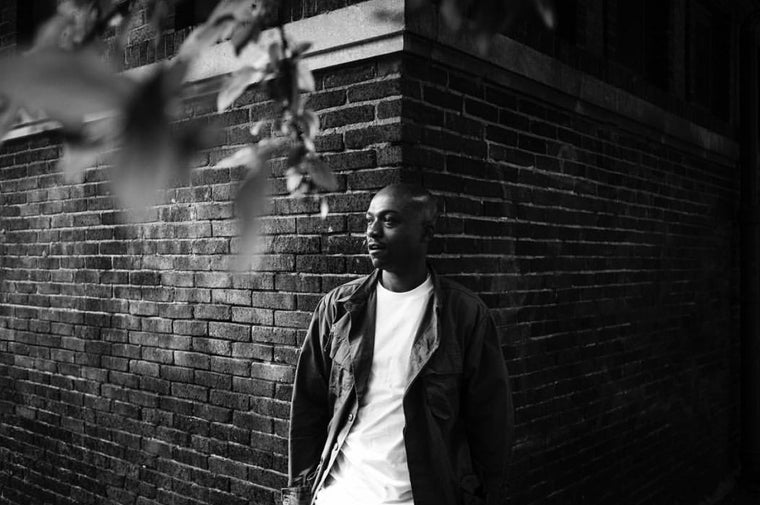The news of Brownsville rapper KA’s passing, also known as Kaseem Ryan, continues to shock his fans and collaborators alike. In the days since the news went viral, many in Hip-Hop are trying to make sense of the loss and find time to celebrate KA’s audio art as he intended.
I am not beholden to religious doctrine nor do I invest much time in esoteric possibilities of fate, but something continues to nag me about the death of Kaseem Ryan. I was listening to the Brooklyn rapper’s latest album, The Thief Next To Jesus on the morning of the day that the news of his death was posted on social media.
I was listening to the album to find a song to add to our ongoing CRT FRSH playlist series at Hip-Hop Wired, but also just enjoying hearing the FDNY firefighter presenting ideas of how Christianity is a hallmark of the Black community while continuing to grapple out loud with the religion being used as a tool to keep the enslaved in fear of the masters.
Beyond the dissection of Christianity as a whole, KA also deftly examines how the music and art that the masses consume might have deeper consequences that we’re unwilling to face. Yes, music and its enjoyment is a subjective experience but being inundated with certain messages does permeate the senses far more than anyone would admit.
I was not unfamiliar with Ryan’s work as someone who is an avowed Hip-Hop nerd. These days, the volume at which music is released today doesn’t allow me to know every nook and cranny of the so-called “mainstream” or “underground” scenes, but in the 1990s, it was far easier to keep up.
Also back then, I was an active rapper, most especially the sort that would be in freestyle “ciphers” and battles while also making my meager attempts at recorded material. At my core, I was a fan first and I picked up rhyming as a means to get closer to the music.
Natural Elements, currently comprised of L Swift (now Swigga Da Don), A-Butta, and Mr. Voodoo, featured more members and one of them was KA, who later left the group as he felt he didn’t measure up as a rapper in comparison to his compatriots. The group’s 1994 debut The EP was very much a product of its time and wore its rugged street-born style with pride.
The style of Hip-Hop then, especially on the independent side, was replete with heavy basslines, horn stab samples, en masse choruses, and an emphasis on lyrical superiority over direction or substance. The goal for many toiling outside the label structure was to be the nicest in their respective lanes.
Reinvention is not a new concept in the history of Hip-Hop music. One of our most famous examples of this is the late, great MF DOOM, who began his career as Zev Love X as a member of KMD (Kausing Much Damage). Like DOOM before him, KA found a late 1990s surge of creativity which culminated in the formation of Nightbreed alongside the late Kev, and of the unreleased music one can find online, it was clear that he stepped his game up tremendously.
Time would pass before we would hear Ryan’s gravelly vocals again, and admittedly, I was reconnected to the lyricist by way of GZA’s “Firehouse” track from the Wu-Tang Clan swordsman’s Pro Tools album. As I later learned, GZA, a fellow Brooklynite, discovered Ryan’s debut album, Iron Works, and invited him to a recording session.
It feels trite to say that the rest is history but, it truly was a historic run of critically acclaimed albums that would commence. I treated every KA drop like a spiritual experience and whatever ability as a writer I thought I had was easily dwarfed by the mighty pen of the Iron Works honcho. There have been times when I’ve been listening to an album such as 2016’s Honor Killed The Samurai where I would stop the track or else fall into a heap of emotions.
Everything about KA felt authentic, tangible, personal, vulnerable, and ultimately human. It would be some time before I discovered that his day job was that of saving lives as a firefighter. I dare say Kaseem Ryan saved my life and that of countless others via his selfless flood of self-expression, creativity, and missives that should be studied by anyone who claims to love this culture.
As I’m writing this, the tears are forming at the corners of my eyes but my heart is beating strong knowing that the music KA gave to the world was done in a manner that was befitting of all the outpouring of love we’ve seen on social media in the past week and more.
Talented acts such as Chuck Strangers, billy woods, Open Mike Eagle, Roc Marci, Pink Siifu, and far too many acts to name all had similar stories of their run-ins with Ryan or their connection to his music. And it wasn’t just the lyrics. Just like his collaborator Roc Marciano, KA didn’t need to outsource production as an adept producer himself but his collaborative works with producers Preservation, Aminoss, and Roc Marci matched his sonic ethos perfectly.
I’ve undertaken the impossible task of gathering one song each from KA’s projects over the years along with a feature verse, opening with the aforementioned “Firehouse” as a primer for the uninitiated. I hope that upon hearing the music you’ll do what I urge everyone else to do if they ever talk shop with me. Just dive in, allow yourself to feel every bar, and try to walk upright as KA did despite the wickedness of the world at large.
Rest Powerfully In Peace to Kaseem Ryan.
—
Photo: Images Obtained From www.brownsvilleka.com



